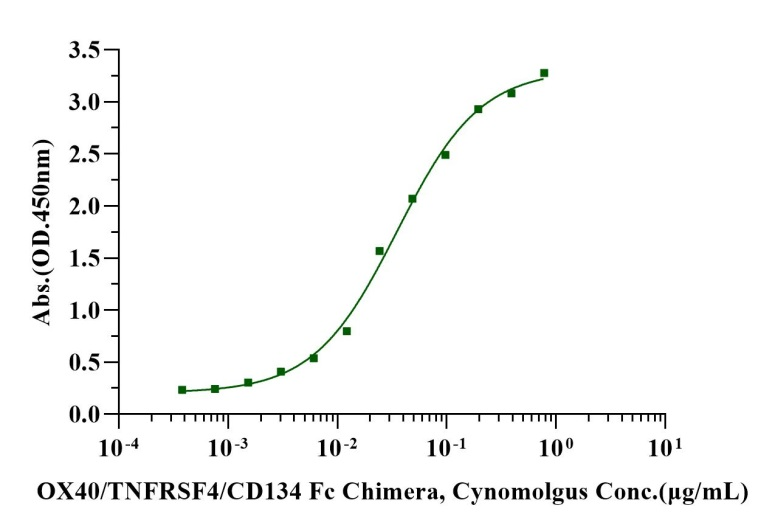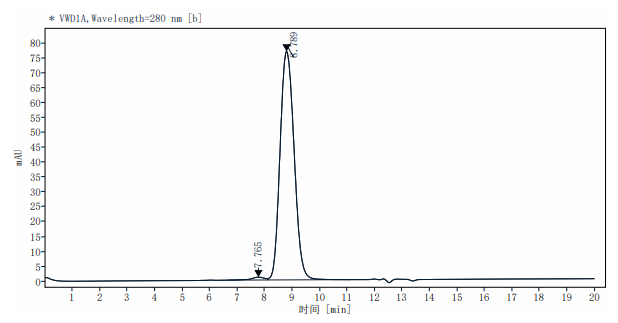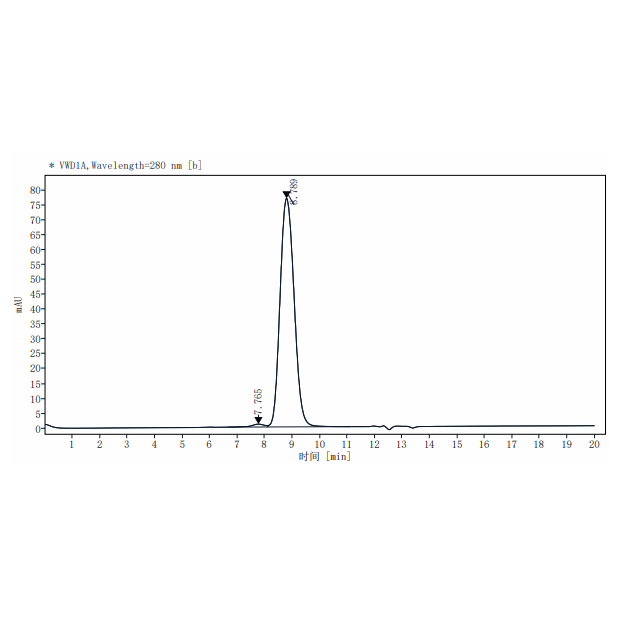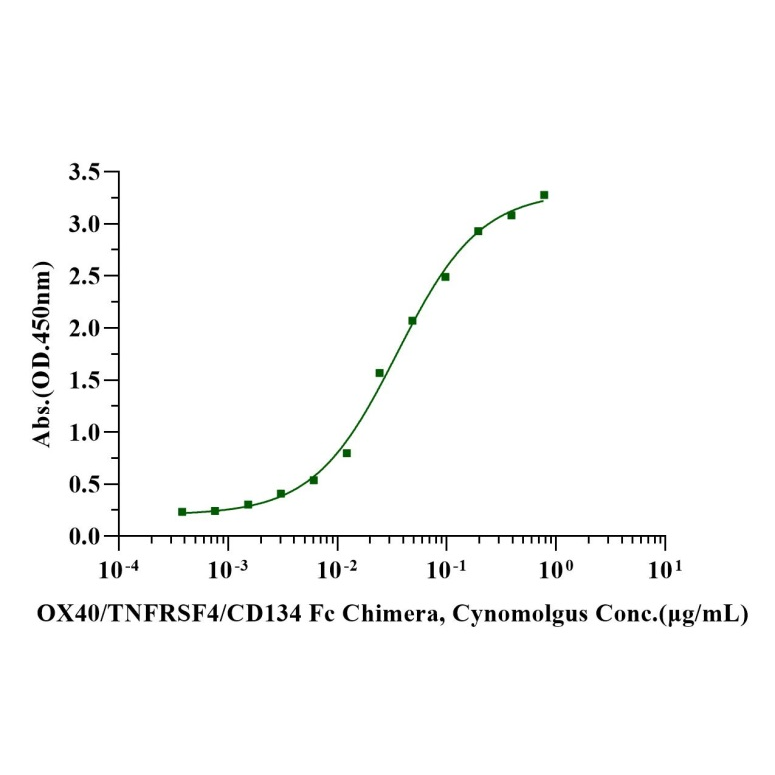Immobilized OX40 Ligand/TNFSF4 His Tag, Cynomolgus (Cat. No. UA010778) at 2.0μg/mL (100μL/well) can bind OX40/TNFRSF4/CD134Fc Chimera, Cynomolgus (Cat. No. UA010869) with EC50 of 29.4-43.16ng/mL.
Product Details
Product Details
Product Specification
| Species | Cynomolgus |
| Synonyms | OX40L; TNFSF4; CD252; Glycoprotein Gp34; TXGP1; CD134 ligand; CD134L |
| Accession | A0A1D5QQH7 |
| Amino Acid Sequence | Gln51-Leu183, with N-terminal His Tag |
| Expression System | HEK293 |
| Molecular Weight | 20-27kDa (Reducing) |
| Purity | >95% by SDS-PAGE |
| Endotoxin | <0.1EU/μg |
| Conjugation | Unconjugated |
| Tag | His Tag |
| Physical Appearance | Lyophilized Powder |
| Storage Buffer | PBS, pH7.4. |
| Reconstitution | Reconstitute at 0.1-1 mg/ml according to the size in ultrapure water after rapid centrifugation. |
| Stability & Storage | · 12 months from date of receipt, lyophilized powder stored at -20 to -80℃. · 3 months, -20 to -80℃ under sterile conditions after reconstitution. · 1 week, 2 to 8℃ under sterile conditions after reconstitution. · Please avoid repeated freeze-thaw cycles. |
| Reference | 1.J Leukoc Biol . 1998 Oct;64(4):503-10. |
Background
OX40 is a member of the TNF receptor family, which is mainly known to promote effector T cell differentiation, proliferation, long-term survival, and pro-infammatory cytokines production, while inhibiting differentiation and suppressive activity of regulatory T cells (Tregs). It is expressed on activated CD4+ and CD8+ T cells, as well as on other cell types. The OX40 ligand, expressed by antigen presenting cells (APC), activates the OX40 signaling pathway which promotes a robust immune response. The interaction of OX40 with OX40 ligand results in enhanced CD4+ and CD8+ cell proliferation, stimulated cytokine production, and increased survival of antigen specific memory T cell. OX40 expression was revealed as an unfavorable prognostic marker and might be a target for immunotherapy in the future. OX40 was identified as a novel molecule in EC; its elevated expression tends to signify favorable clinical outcomes. As a second immune checkpoint, OX40 may have potential implications for the prognosis and immunomodulation of EC patients. In mice, the absence of OX40 has been shown to cause a strong reduction in the number of effector memory CD4+ cells. Furthermore, the CD8+ response was reduced and tumor growth was accelerated. Accordingly, it is comprehensible that the immune-stimulating properties of OX40 agonists could overcome some of the immunosuppressive properties within tumor environment.
Picture
Picture
Bioactivity

SDS-PAGE
1μg (R: reducing condition, N: non-reducing condition).
SEC-HPLC





